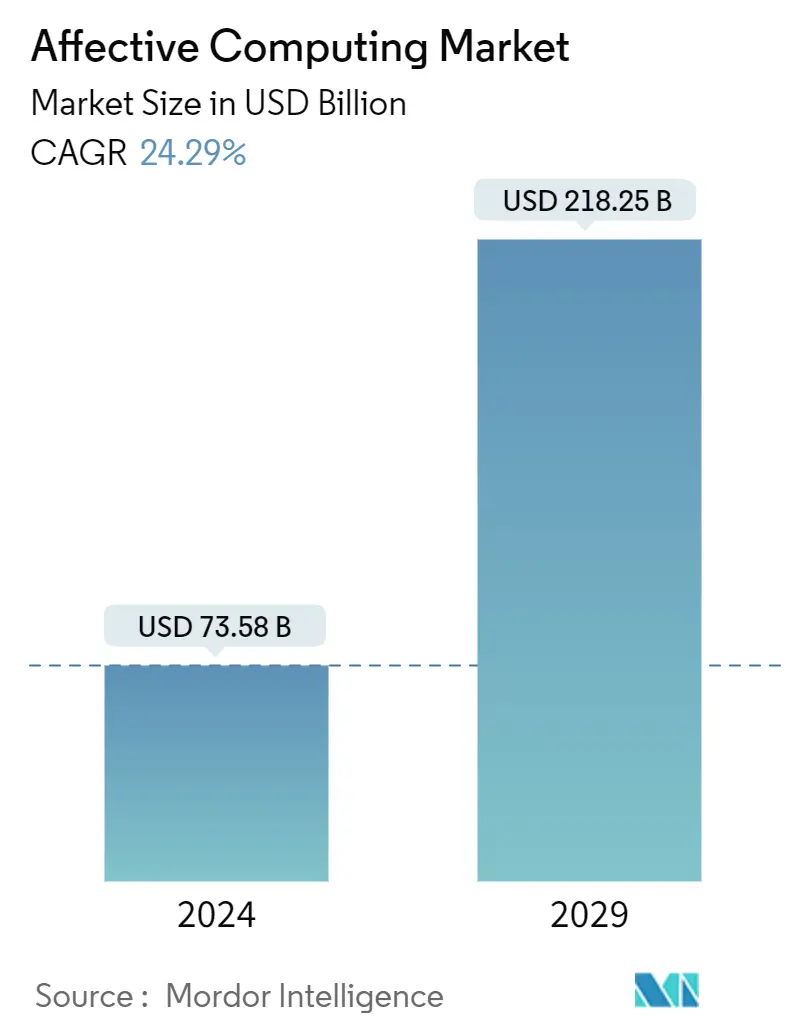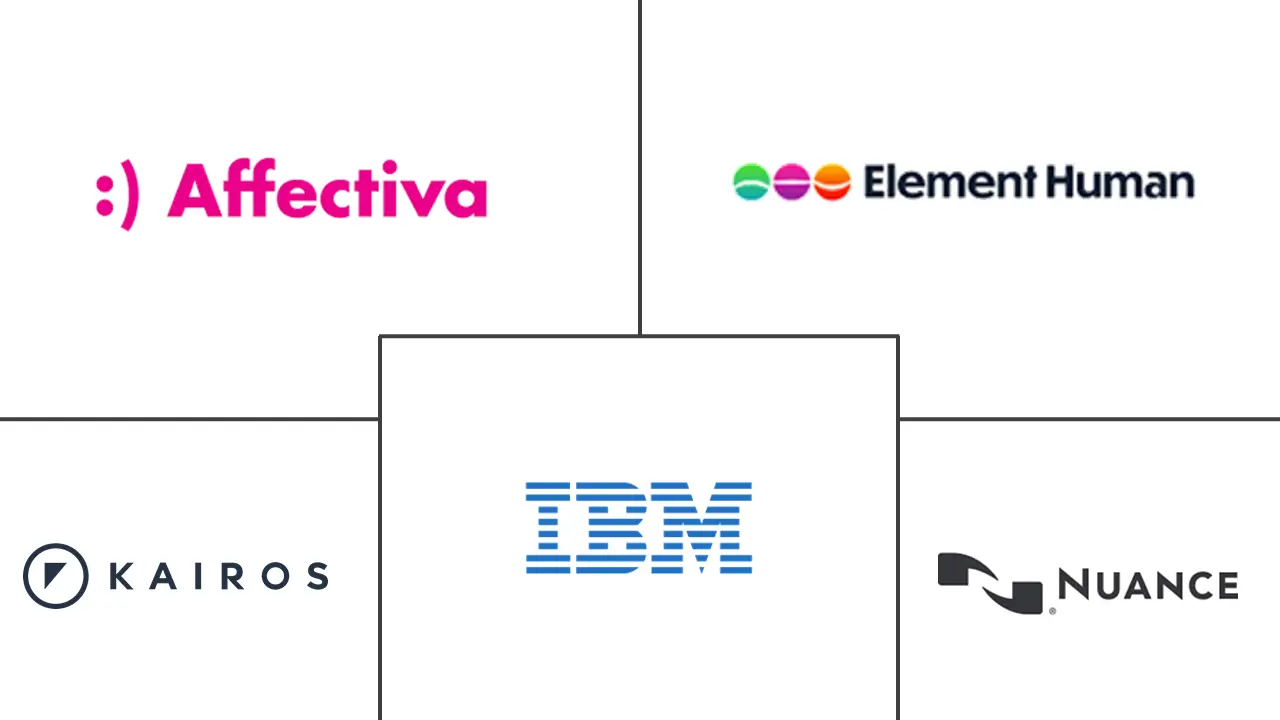Market Size of Affective Computing Industry

| Study Period | 2019 - 2029 |
| Market Size (2024) | USD 73.58 Billion |
| Market Size (2029) | USD 218.25 Billion |
| CAGR (2024 - 2029) | 24.29 % |
| Fastest Growing Market | Asia-Pacific |
| Largest Market | North America |
Major Players
*Disclaimer: Major Players sorted in no particular order |
Need a report that reflects how COVID-19 has impacted this market and its growth?
Affective Computing Market Analysis
The Affective Computing Market size is estimated at USD 73.58 billion in 2024, and is expected to reach USD 218.25 billion by 2029, growing at a CAGR of 24.29% during the forecast period (2024-2029).
The rise in demand for telehealth-related affective computing solutions and the rising need for socially intelligent artificial agents are some significant factors that are anticipated to propel the growth of the affective computing market during the projected period. Furthermore, the demand for effective computing is expected to develop due to the increasing use of wearable technology, increased internet penetration across industrial verticals, and global technical breakthroughs.
- The affective computing market is developing due to the growing need for improved security in various industries and the demand for virtual assistants to detect fraudulent activities. Affective computing is used in multiple security applications, such as voice-activated biometrics, to restrict access to unapproved users. With the advancement in computing capacity, improved communication technology, and new solutions, such as AI, new possibilities are being realized, which will positively impact the market's growth.
- The emergence of affective computing has driven the growth of various applications. One of the significant areas in affective computing has been the design of computational devices that are proposed to showcase either natural emotional capabilities or capable of convincingly simulating emotions. For example, for speech impairments and emotionally handicapped people, Gestele, a prototype, was developed that adds to the affected people's emotions, gestures, or other forms of communication. The technology can also be used for personalization by adjusting light, type of music, and room temperature by detecting a person's mood, etc.
- Moreover, the increasing usage of robotics provides further incentives for implementing this technology. The recent advancement in robotics has led to an immense increase in the demand for artificially intelligent robots to behave politely and socially smartly. A report on World Robotics by the International Federation of Robotics (IFR) also showcased that worldwide industrial robot installations amounted to some 517,385 last year. It is prognosticated that by 2025, global industrial robot installations will amount to around 690,000. Additional feature inclusion, such as affective computing, can make these industrial robots much more acceptable and have better human-computer interaction.
- In its present technological capabilities, AI can support three essential business needs: automation of business processes, gaining insight through data analysis, and engaging with customers and employees. The third level requires cognitive engagement. Cognitive insights offered by machine learning differ from traditional analytics and require higher-level data. Due to such factors, these solutions are expected to improve further. Vendors are expected to form strategic partnerships with the end users to use the data for development purposes and offer them comprehensive solutions and services.
- Moreover, various organizations are engaged in innovations in applying affective computing (also called Emotional AI), which is expected to drive market growth during the forecast period. For instance, in August 2022, At the Massachusetts Institute of Technology (MIT), an innovative team used emotional AI to enhance people's mental well-being and general quality of life. Recent research from the MIT Media Lab's Affective Computing Research Group presents empirical proof that empathic artificial intelligence (AI) machine learning may mitigate the negative impacts of rage on human creative problem-solving.
- Affective computing market growth is anticipated to be hampered by issues with technical compatibility and high implementation costs, among other essential considerations. Implementing emotional computing requires a significant upfront investment, and delay in practical applications limits industry expansion. The system's expensive costs and difficulty comprehending user behavior further limit the market's development.
- The emergence of the COVID-19 pandemic significantly affected the affective computing industry, as people became more concerned regarding their health and safety during the lockdown measures. The rapidly increasing COVID-19 infections also gave rise to the usage of Al-based monitoring equipment, detection equipment, and advanced vaccination machines, among others.
